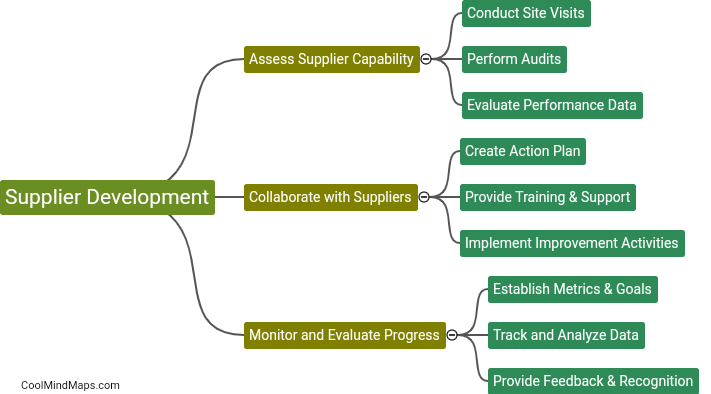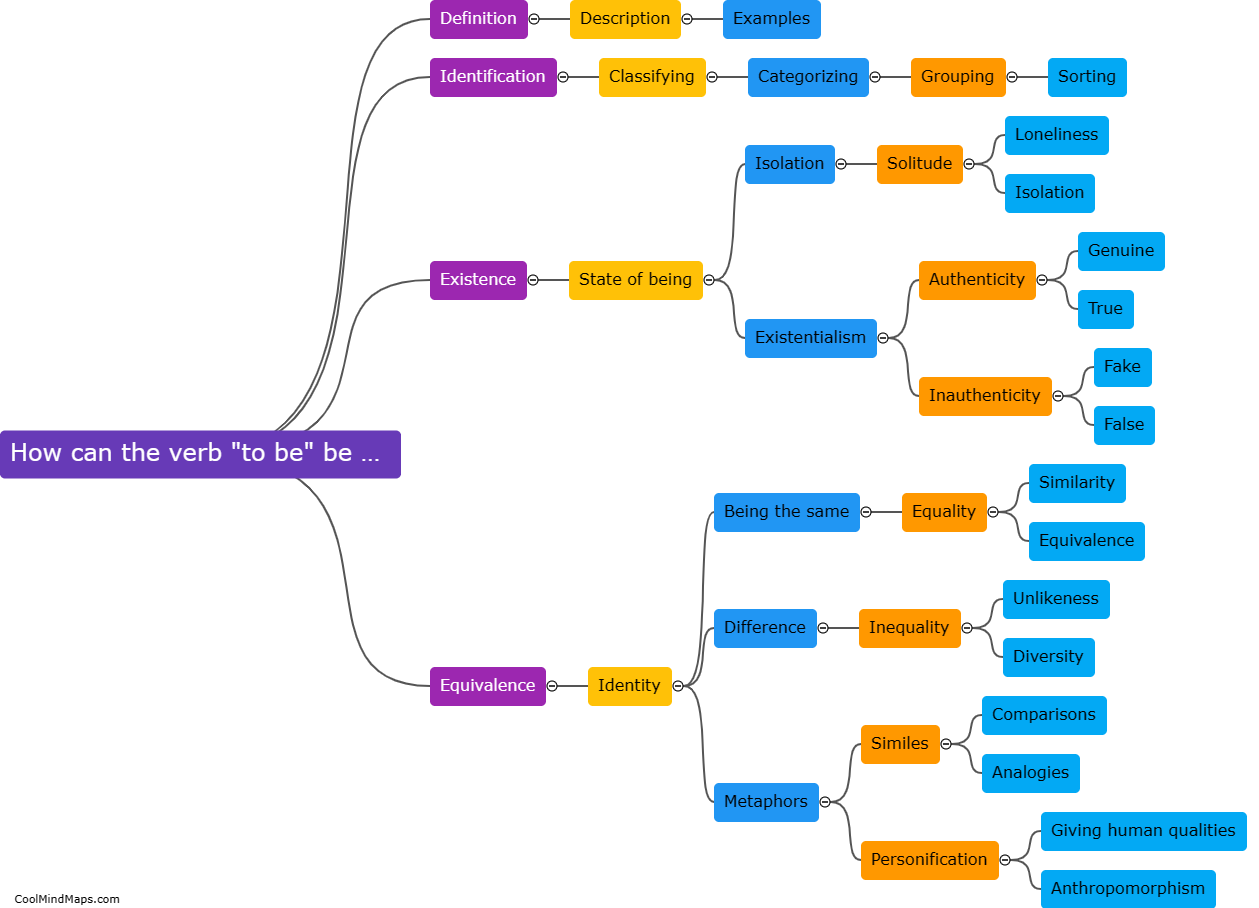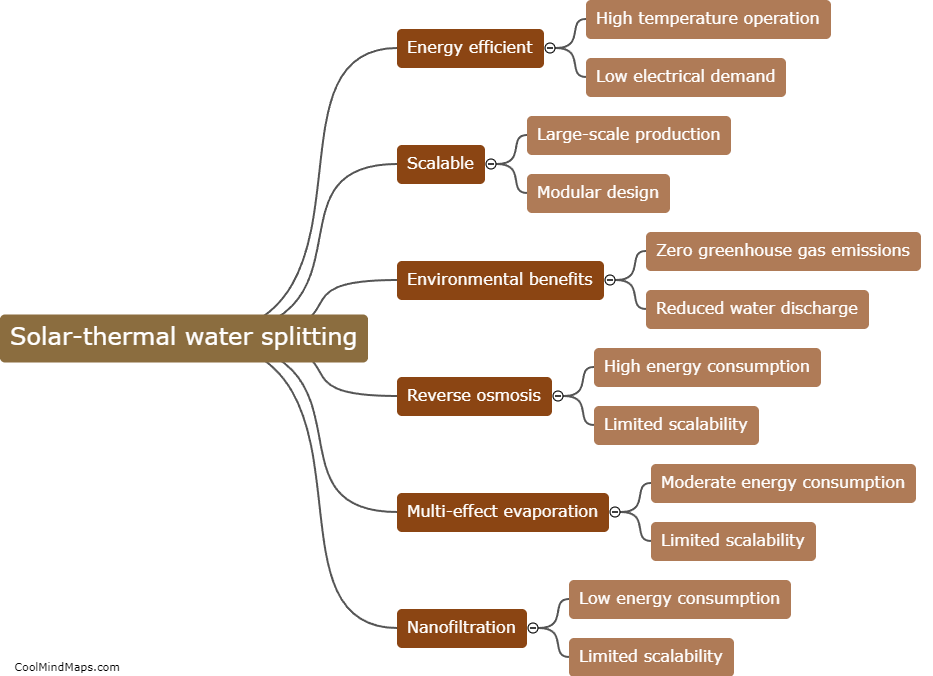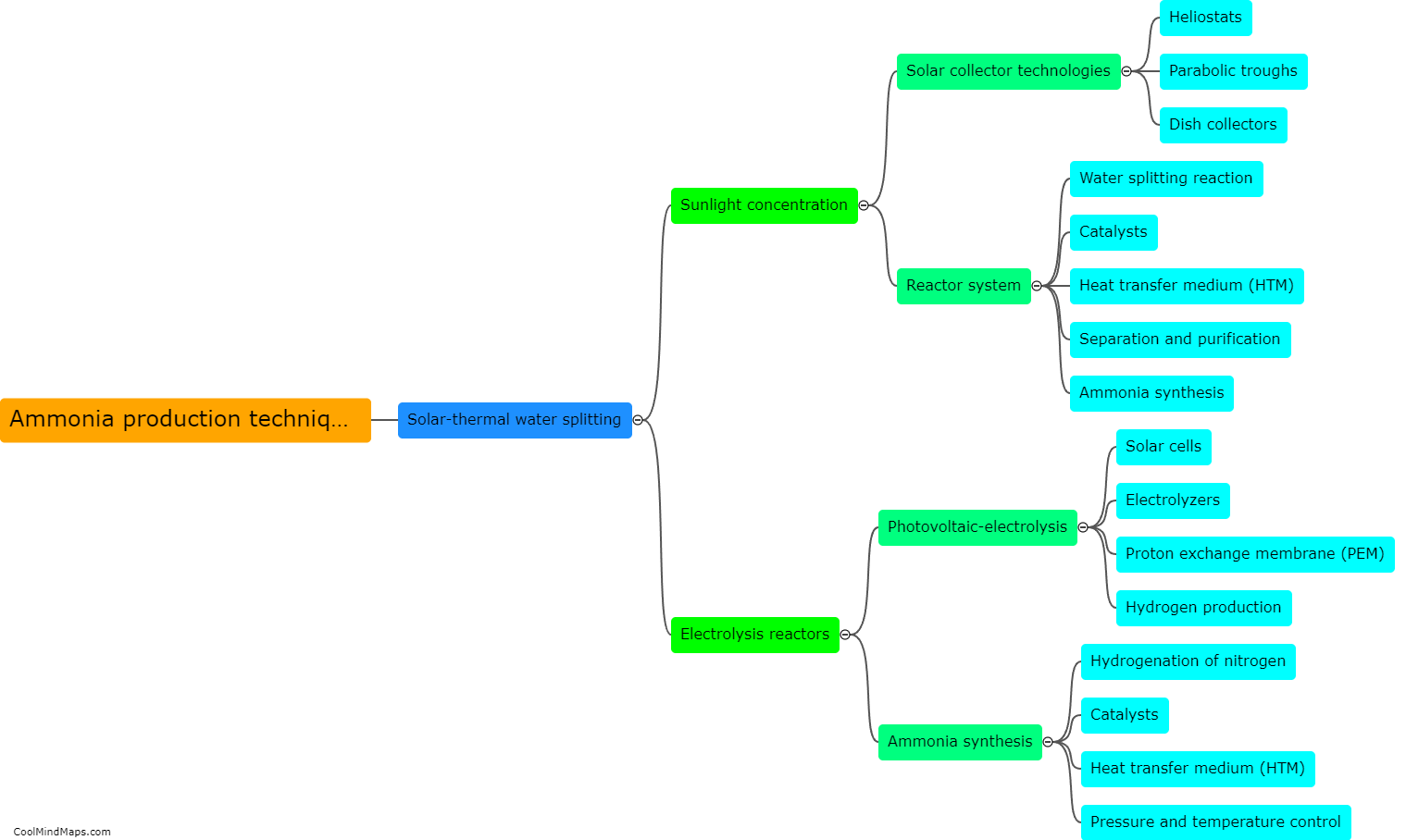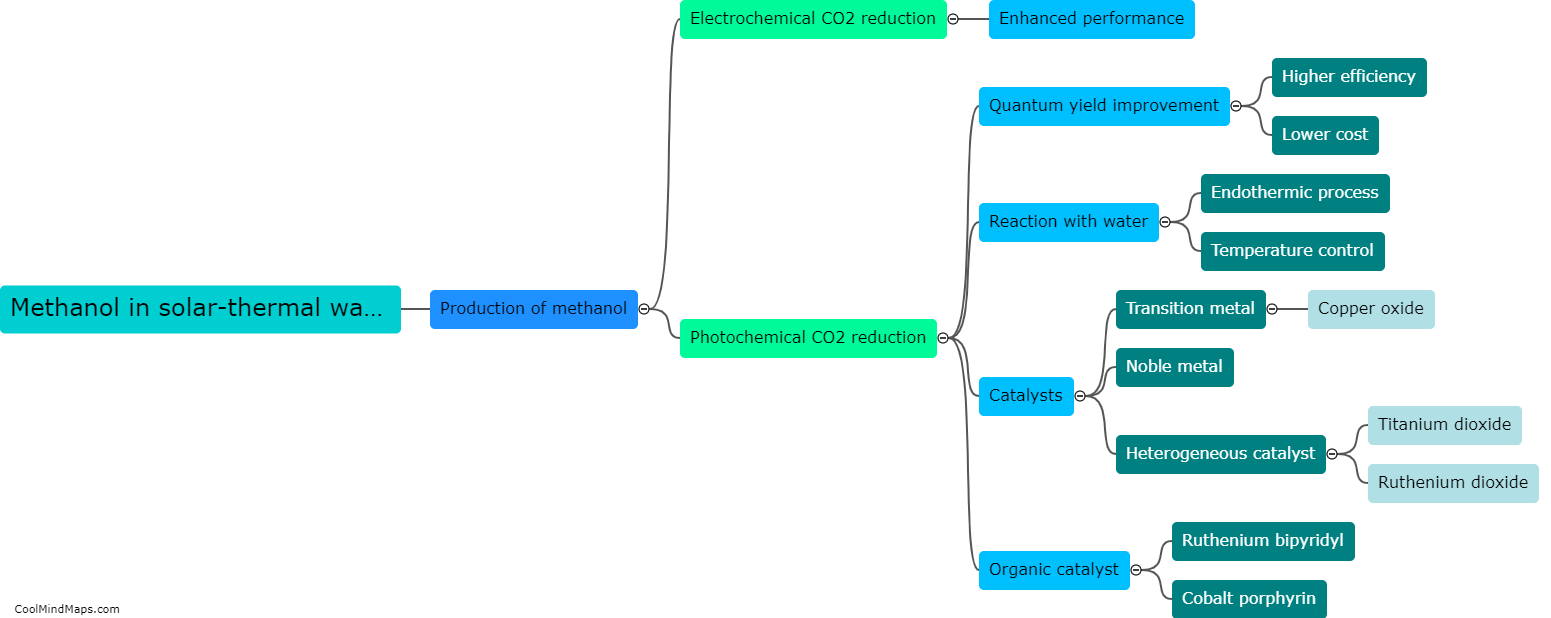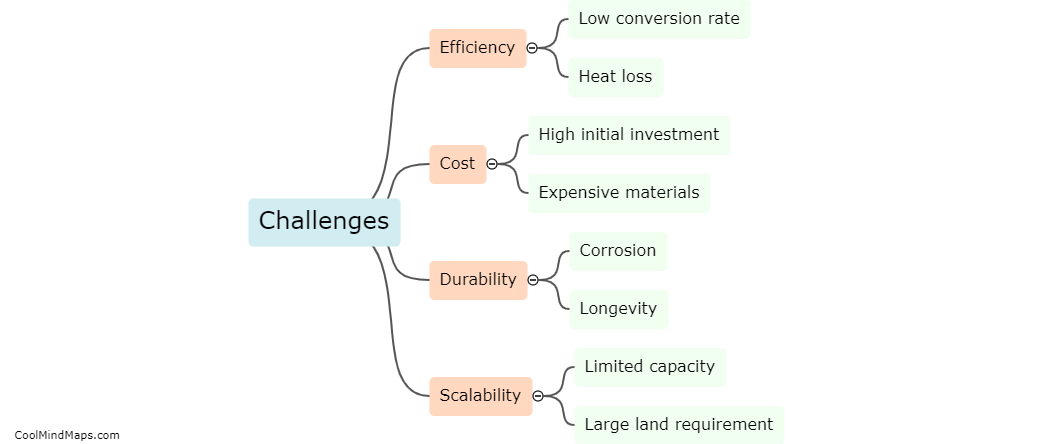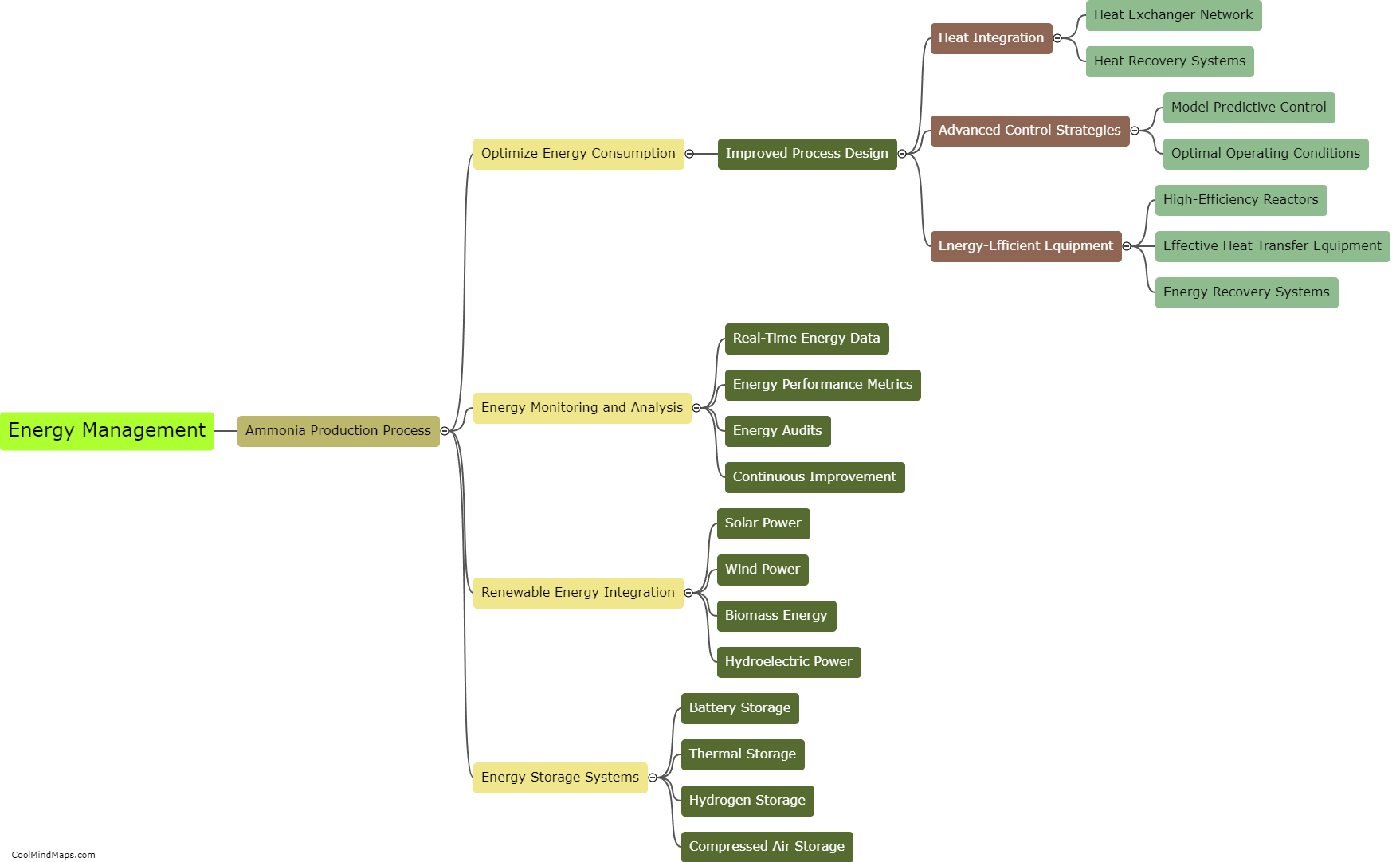What are the challenges of implementing solar-thermal water splitting for ammonia production?
Implementing solar-thermal water splitting for ammonia production poses several challenges. Firstly, the efficiency of the water-splitting process needs to be improved to make it commercially viable. Currently, the conversion of solar energy into hydrogen through water splitting is quite low, and developing more efficient catalysts and reactors is necessary. Additionally, the high operational temperatures required for solar-thermal water splitting can cause material degradation and corrosion, reducing the lifespan of the equipment. This necessitates the development of durable and cost-effective materials that can withstand the harsh conditions. Lastly, the intermittent nature of solar energy availability poses a significant challenge for continuous ammonia production. Energy storage or integration with other energy sources will be vital to ensure stable production. Addressing these challenges is crucial for the widespread adoption of solar-thermal water splitting for ammonia production and achieving a sustainable future.

This mind map was published on 6 December 2023 and has been viewed 96 times.

